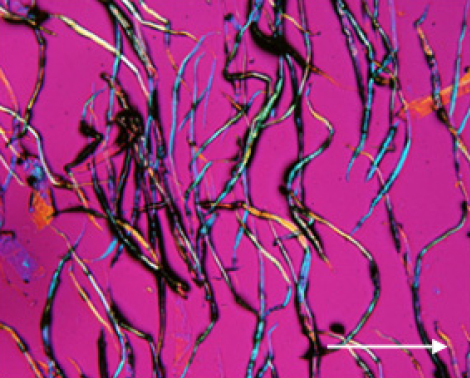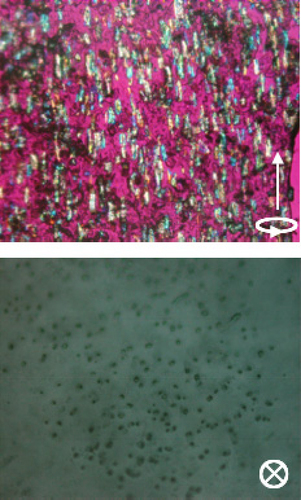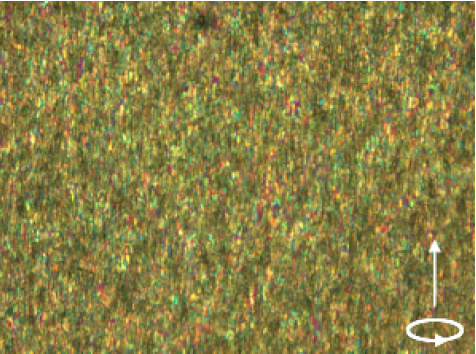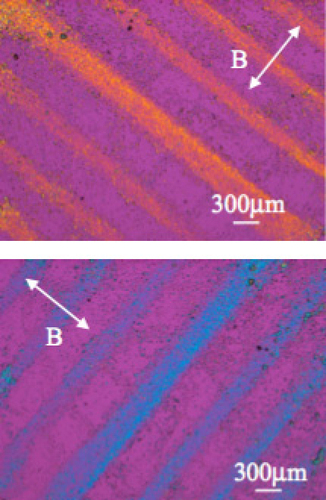Figures & data
Figure 1 Optical polarizing micrograph (with a color plate) showing magnetic alignment of cellulose fibers. A droplet of pulp suspension used for papermaking was cast on a slid glass and water is allowed to be evaporated under a static magnetic field of 8 T. The arrow indicates the direction of the magnetic field.

Figure 2 Polarized microscopic observation (with a color plate) of uniaxial alignment of cellulose fibers achieved by sample rotation (25 rpm) in a static magnetic field of 12 T. The arrow indicates the rotating axis of the field. Alignment is fixed by the photopolymerization of the UV-curable resin precursor used as a matrix. Side view (top) and top view (bottom) clearly indicate the uniaxial alignment.

Figure 3 Polarized microscopic observation (with a color plate) of uniaxial alignment of cellulose fibers achieved under a rotating magnetic field (the arrow indicates the axis of rotation). Cellulose fibers dispersed in a resin precursor (XVL-14) was sandwiched between two cover glasses and rotated at 25 rpm in a static magnetic field of 12 T. Alignment was fixed by the photopolymerization of the UV-curable resin.

Figure 4 Polarized microscopic observation of monodomain of chiral nematic film obtained under 12 T magnetic field. The photograph on the right shows enlargement. A fingerprint texture pattern is clearly observed.

Figure 5 Magnetic micro-patterning and alignment of cellulose fibers observed under polarizing microscope with color plate. The different colors of the patterned lines indicate that fibers are oriented. The line in the middle is about two times wider because the width of the corresponding iron layer of the modulator is two times larger.
